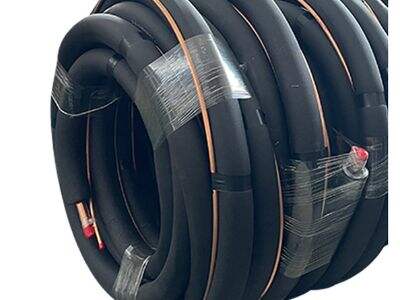Just having all AC copper pipe flared properly.
Flaring copper tubing for A/C or refrigeration job is serious work to ensure the copper tubing act as refrigerant gas passage without any leak. Flaring is the act of making a smooth, angled opening at the end of the copper pipe to connect with other parts of the system. If an open-ended copper pipe is flared properly, the refrigerant gas that should be circulating through it remains inside the system, rather than leaking out and causing loss of cooling efficiency and (potentially) damage to the environment. Flaring an ac copper pipe is a handy tool in an HVAC technician’s arsenal that you’ll want to know for sure in order to keep your unit well-working.
How to flare an AC copper pipe the right way Step by step?
Flaring an AC copper line doesn’t have to be daunting, and it can actually be quite simple with the correct tools and techniques. Here’s a guide that will help to flare an AC copper pipe properly:
Measure and cut copper pipe: Use a tube cutter to cut the copper pipe to the desired length. Be sure to cut it cleanly and squarely for a tight seal.
Deburr edges: If you’ve cut the pipe, use a deburring tool to smooth any rough edges or bulges from the interior and exterior of the pipe. Then, the ac copper line set won't break into the flaring.
Put the pipe into the flaring tool: Slide the pipe into the flaring tool so that it fits flush against the tool’s shoulder. The pipe end should be a little above the tool.
Clamp the pipe: Hold the pipe against the flaring tool and tighten the clamp to hold it in place. Ensure it is held securely so there is no movement while you are flaring.
Flare the pipe: With the flaring tool, gradually flare the pipe’s end. Press firmly and rotate the tool to turn the bush into a smooth, angled flare. Inspect the flare for uniform roundness with no cracks or defects.
Check the flare: After flaring is finished, be sure to visually check the flare to make sure it is formed and free of any imperfections. If you have done it correctly, the flared ac copper pipe insulation material will have a smooth, even cone shape that creates an even, tight connection.
How Not to Use a Copper Line for a Leaking Refrigerant?
In order to avoid problems such as leaking refrigerant and shortened life of your air conditioning unit, consider these points for flaring a copper tube:
Quality tools: Make sure you have a good flaring tool that is reliable and can produce consistent and accurate flares every time.
Inspect for damages: Examine the flare closely for any cracks, slashes, or rough spots that could affect the seal.
Favor the right technique: Pay attention to the manufacturer’s advice on flaring the copper pipe so that it is properly sealed.
Test the Connection: After the flare has been formed, test the flare against any other components that connect to them to ensure that the join is a tight fit with no leaks.
Use a flare nut: The metal flare nut that goes over the flared copper pipe can also help seal and prevent leaks.
Common problem not to make when flaring an AC copper tube
Flaring an AC copper pipe: This is a very detailed and precision process. To prevent leaks due to bad seal, also which are a very common problem:
Excessive flaring: If too much stress is laid on the pipe or the flare is too large, the copper wall will reduce and cause leaks.
Under-flaring: Failure to flare a copper pipe sufficiently can lead to a connection that is too loose and allow refrigerant gas to escape.
Using worn tools: Worn/dull flare tools will result in uneven flares that will not seal properly.
Rushing the job: Flaring takes a little bit of time; don’t rush the process or make quick flares, as this could cause leaks.
Forget to de–burr: If you forget removing the sharp edge or burrs from the copper tube, it may hinder the flaring process and affect sealing.
Establishing a solid connection with the correctly flared AC copper pipe
The flaring AC copper pipe is a must used fitting for keeping the air conditioning system working in an efficient and safe manner. And if you do everything correctly and pay attention to the details, and have the right tools and follow the process, you can be sure your system will not have a refrigerant leak after you have brazed the connection and your system will not have a problem running. One of the many skills that you're going to need to develop if you want to maintain and repair your HVAC unit is learning to flare a copper pipe. Make sure to verify everything is correct before crimping and test out the connections to have full confidence in the seal keeping your air conditioner at its peak efficiency. With practice and patience, you will learn how to flare AC copper pipes and become successful in your field as an HVAC technician.

